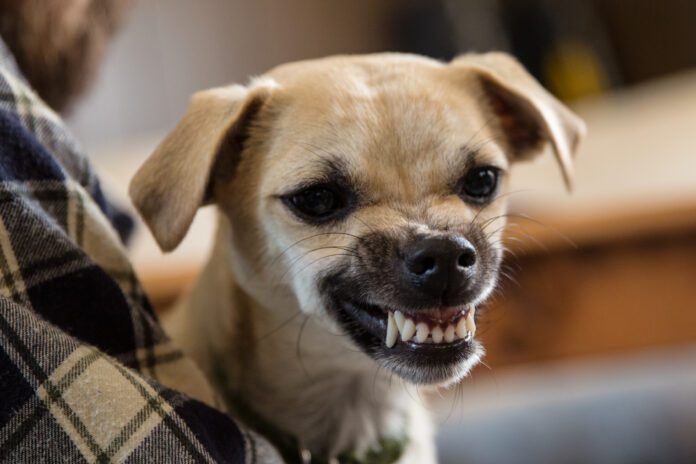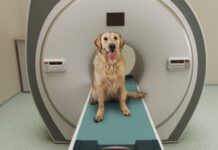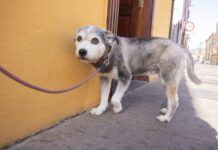Without question, dogs get jealous, and it’s especially apparent if you’re giving attention to a different canine. Studies have proven dogs have this emotion. If you have a jealous dog, don’t despair. You can get another dog, but you need to understand the roots of jealousy.
Solving the problem starts with recognizing the signs of jealousy, which means being able to read dog body language. One of the most useful books on the market is “Doggie Language: A Dog Lover’s Guide to Understanding Your Best Friend” by Lili Chin. This inexpensive book says a lot with few words and many great illustrations.
Possible signs of jealousy when another dog approaches you and your dog or vice versa include:
- Physically nudging a dog out of the way.
- Showing various degrees of aggression, such as facial expressions mean to warn, growling, even snapping at the other dog.
- Whining or anxious behavior that can include pacing.
- Attention seeking behavior such as offering you a toy, paw, etc., sometimes seeming frantic.
- Crowding or physically blocking access to you.
- Resource guarding (any degree of) their possessions/areas such as beds, toys, meal areas, etc.
- Even potty accidents related to a timeline of having another dog near you can imply jealousy.
Jealousy is normal. Dogs get jealous because you are a resource and the source of all good things in your dog’s life. It’s naturally ingrained in a dog to not want to share, and your dog may act aggressive. This also has been seen when a new baby arrives home! Your dog doesn’t want to share the attention.
But, with dogs, if your dog already truly likes other dogs and enjoys their company, it’s not a difficult proposition to introduce the concept of sharing you to that dog.
Note: Reactive dogs are different from jealous dogs. Introducing reactive dogs is a carefully choreographed dance that takes many things into consideration and may require the help of a professional trainer. Reactivity is an overreaction versus a normal range of emotions.
Tips for Success With Jealousy
I like to take things as slowly as possible. If you are adopting a dog from a rescue or shelter, it’s imperative that there be a meet-and-greet first. Ideally, the rescue or shelter staff will be savvy enough with dog-play behavior so that they can start you off on the right path. It’s helpful for you to know what style of play your dog enjoys best with other dogs so that they can choose the best possible match. The same savviness should apply to a breeder with an adult dog and even a puppy. But be aware that adding a puppy can be much more work than with an adult dog as puppies are a lot of work in of themselves, let alone when creating a new relationship.
It’s best if you can have several meet-and-greets in advance of bringing the new dog home. Mutual walks are a great way to help create a bond with shared activity. Show some attention to each dog and make sure that you verbally reinforce your current dog for accepting your attention to the other dog. Your dog may show jealousy when you pet the new dog. Make it clear with your body language that you can pet both at the same time equally. You do have two hands!
Once you decide that things look promising and set a date to bring your new addition home, plan on spending a few days off from distractions to develop the foundation. It’s important that each dog has their own things and their own space for meals, sleeping, toys, etc. Be fair. Have a few pairs of identical toys for each that you introduce carefully. Active supervision is key. I start with each wearing a drag leash so that you can intervene quickly if necessary.
Open Space and Fairness
If the weather is amenable to such, starting the calm togetherness training outside is often better, with the space being more open, even if your porch or yard isn’t large. The illusion of space is helpful. Another human helper is great but if that’s not an option, I have certainly done this on my own with multiple dogs in the household. You can too. Start with some shared training exercises so that impulse control around treats can move forward on the right path. Take turns with who you treat first and be obviously fair. In case you question the logic here, this is also based on science. A 2009 study published in the Proceedings of the National Academies of Science in the United States of America showed dogs notice and understand fairness.
The next step can include relaxing together with the human seated. If you have seating on your porch or in your yard that makes sense to use, you can start there. Otherwise, choose the room in your home with the most open seating plan. Move a coffee table if need be. The human part of the equation must learn to use their own body language to help shape where each dog should safely be. This is an exercise in learning to be an effective parent who is kind but puts boundaries in place for the safety of everyone. I think it’s helpful to establish the boundaries right away for quiet time when each dog will probably want to cozy up to you.
For example, if your dog is starting to nudge the other dog aside during this practice, you can subtly use an arm or a leg to define the boundaries and show that both can get attention at the same time in a fair manner. Pet both dogs while softly verbally reinforcing your resident dog when she accepts that they can both share you. The sooner that you establish what is and isn’t acceptable in the realm of stretching boundaries, the smoother this forward path will go.
Overboard Jealousy
The steps in this article are for dogs who exhibit tendencies on the lower end of the jealousy scale. If your dog resource guards anything/anyone in such a way that you are concerned about a battle and bloodshed, then you should find a well-qualified rewards-based trainer/behavior consultant to help you move forward with this scenario. Knowing how to introduce a new dog properly at the get go sets your life with said dogs up for success rather than failure. You won’t regret a moment of time spent moving at the right speed.







My sister has a little Chihuahua mix named Skeeter just like the one in the photo. I have Rhodesian Ridgebacks. My sister always wants to hold Skeeter when my dogs are around because she is afraid Skeeter will get hurt. Skeeter looks just like the dog in the photo as far as her growling goes. It’s pretty much constant if my dogs get too close trying to sniff. Do you think it’s jealousy or that Skeeter is afraid? Linda thinks she is afraid.